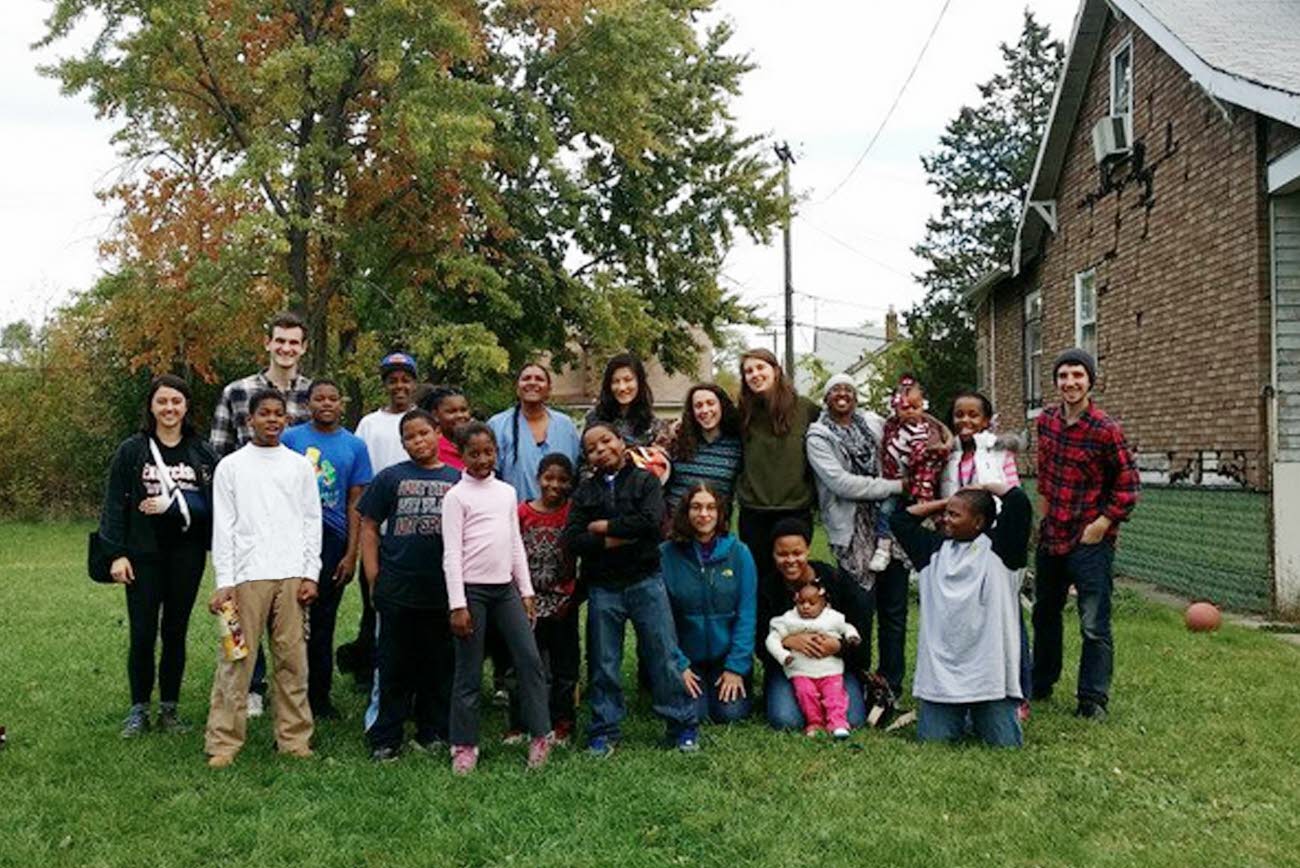Auntie Na's House Serves as Shelter, Community Center
This story is part of an occasional series to showcase local programs that rely on U.S. Census Bureau data to serve their communities.
In 2010, Sonia Brown began leaving food and clothing on the corner of her street on Detroit’s west side. On many occasions, before she could walk back to her house, the items were gone, quietly gathered by neighbors in need.
Brown’s gesture recalls her childhood growing up in that same house, bought by her grandfather in the 1950s. Among Brown’s earliest memories were of her grandmother distributing food to neighbors from the basement of their home. Her grandfather organized gatherings at home and throughout the neighborhood.
Brown wanted to continue her family’s legacy and she eventually founded Auntie Na’s House, a nonprofit she operates from the same home that had served as a meeting place for local youths and community residents when she was a child. Auntie Na’s House now serves as a domestic-violence shelter, after-school learning center and safe haven for children.
Sustained primarily by individual donations and staffed by volunteers, Brown has had to develop strategies to meet the community’s growing and changing needs. Using data from the U.S. Census Bureau’s American Community Survey, she said she was able to identify important demographic shifts.
After examining the data, she noticed a decline in males ages 30 to 48 but an increase in adolescents and young men between the ages of 15 and 22. Younger women were also prevalent in the data, which brought into focus much of what Brown was seeing first-hand in the neighborhood.
“Because of the Census Bureau, I was able to find out that we no longer have the father figures here that we once had,” Brown said. “We no longer have as many grandmothers that we used to have. We now have more young mothers. We have been able to find out where the needs are. Because of that, it has allowed us to figure out which directions we need to go.”
Supporting the neighborhood’s young, often single, mothers and their children has become a key mission of Auntie Na’s House. Young mothers who need a babysitter are able to leave their children to be cared for while they search for jobs or housing. Children who need something to do after school or a meal before school can always find an open door.

While there are volunteers who help with looking after children and pointing mothers to resources that can help them transition to safer homes, the outreach at Auntie Na’s House is limited by the home’s small space, which already supports separate music and reading rooms and administrative offices. Auntie Na’s house also has a large garden in the backyard, which has grown to cover three additional lots. The one-story home was originally about 800 square feet when built in 1919 but the basement and attic were finished to accommodate growth.
The extra square footage has been helpful but Auntie Na’s House needs more. It is rehabilitating three additional homes on the same block that will house families and community health programs. One, the Grace and Mercy House, will serve as a transitional space for domestic violence survivors and their children.
Youth engagement runs the gamut, Brown said. While Auntie Na’s House serves as an overall community-gathering place, it also offers activities that teach young people critical thinking and life-management skills. From learning to strategize by playing chess to helping sort out and distribute donations, children are encouraged to act purposely and get involved in substantive ways.
Erin Ulrich, a student at Oberlin College in Ohio, volunteers with Auntie Na’s House. She said the Mercy and Grace House will take a holistic approach by offering children an art space, tutoring and a healing garden while mothers can establish safer, permanent residences for their families.
Ulrich said the new facility would not be able to sustain itself on funding from community donations alone. Auntie Na’s House intends to seek grant dollars for the facility, and data are critical.
“Having data that reflect our needs can help us to get the funding and support to do our work,” Ulrich said. “Women and children who live below the federal poverty level are more likely to be trafficked and not have the resources they need to escape these situations.”
The Mercy and Grace House expansion runs parallel to a project underway with Wayne State University to open a clinic in the neighborhood. Brown said she hopes that Auntie Na’s House becomes a model for how other Detroit neighborhoods can build support networks.
“We started by offering just food and clothes on a daily basis to offering the community programs for the children, giving them a place to come, a meal every day, and giving them access to after-school tutoring and computers,” Brown said. “Music and art programs were taken out of schools; we’re giving them that here. We’re allowing the better part of Detroit that rarely gets seen to be seen and networking with other organizations to help rebuild our community.”
Jeana D. Bunn-Hector, a Detroit native, and Nesreen Khashan are data dissemination specialists at the Census Bureau.






